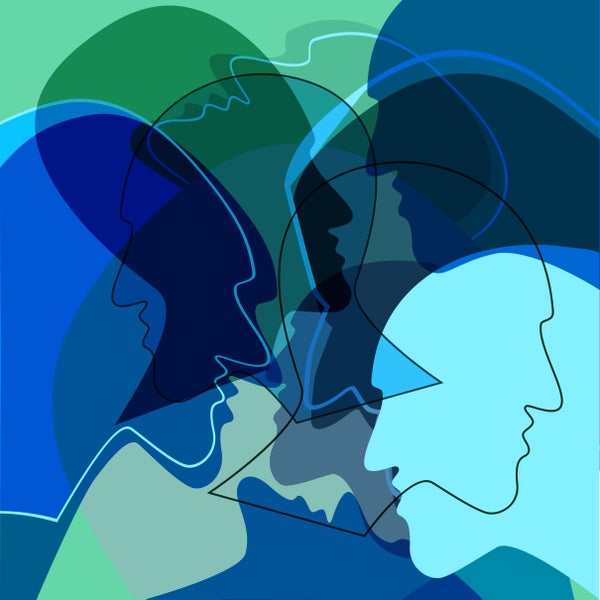This article was published in Scientific American’s former blog network and reflects the views of the author, not necessarily those of Scientific American
Have you ever heard of a condition known as “general paresis of the insane”? Probably not. In the 19th century general paresis was one of the most commonly diagnosed mental disorders. Its symptoms included odd social behaviors, impaired judgment, depressed mood and difficulty concentrating. Around the turn of the 20th century, though, we figured what it really was—a form of late-stage syphilis infecting the brain and disrupting its function. A few decades later we discovered a highly effective treatment: penicillin.
Although general paresis is now very rare, its example is still instructive. Any honest researcher will tell you we don’t currently have good explanations for most mental disorders. Depression, obsessive-compulsive disorder, schizophrenia—we don’t really know how these patterns of disrupted thought, behavior and emotion develop or why they stick around.
Yet the hope remains that, much like with general paresis, we may soon discover the root causes of these illnesses, and this knowledge may tell us how to treat them. An example of this hope can be seen in the popular notion that a “chemical imbalance” causes depression. This might turn out to be true, but the truth is we don’t know.
On supporting science journalism
If you're enjoying this article, consider supporting our award-winning journalism by subscribing. By purchasing a subscription you are helping to ensure the future of impactful stories about the discoveries and ideas shaping our world today.
Some researchers are starting to think that for many mental disorders, such hope might be based on incorrect assumptions. Instead of having one root cause, as general paresis did, mental disorders might be caused by many mechanisms acting together. These mechanisms might be situated in the brain, but they could also be located in the body and even in the external environment, interacting with one another in a network to create the patterns of distress and dysfunction we currently recognize and label as varieties of mental illness. In this more complex view, patterns such as depression and generalized anxiety arise as tendencies in the human brain-body-environment system. Once the patterns are established, they are hard to change because the network continues to maintain them.
If the causal structures of many mental disorders are complex, how should we seek to illuminate them? I think recognizing the complexity should push us to rethink how mental illness is studied.
For a start, we should no longer be looking for just one nugget of truth. Rather than a moment of discovery—Alexander Fleming noticing that a mold seemed lethal to bacteria or Archimedes leaping from his bath yelling, “Eureka!”—we should expect a more gradual process of knowledge gathering. Instead of one paradigm-defining discovery, coming to understand mental disorders will probably be much more like a team of paleontologists slowly brushing away dirt to reveal a set of fossils and developing ideas about how all the bones fit together to form a complete dinosaur.
Instead of a single theory—the X theory of depression—we will likely need multiple explanations that each focus on different mechanisms in the network. As hypothetical examples, theories might emerge at a neurological level showing how difficulty experiencing pleasure relates to difficulty sleeping, and at a psychological and ecological level explaining how changes that depressed people make to their environments contribute to the perpetuation of their mood (the latter example is inspired by this paper).
In the paper this essay is loosely based on, which will be published in the journal Theory & Psychology, my Ph.D. supervisor and I propose a structure to help researchers organize the process of discovery. We call it relational analysis of phenomena, or RAP. In RAP, researchers break down disorders into meaningful parts and richly describe these parts at multiple scales of analysis: What is going on in people’s brains and bodies? How does it feel? What do they do? How does it change their environment? How do others react to it?
Only after this rigorous description process does the investigator try to explain the relationship between some of the parts. The overarching intention is to slowly uncover the mechanisms of the disorder in people’s lives. Once we understand enough of the causes at play, we may begin to understandhow the dysfunctional pattern of behavior is maintained and how best to effect positive change.
Ultimately some mental disorders might turn out to be like general paresis, with one well- defined cause in the brain. Others might turn out to be distortions in thought, behavior and emotion supported by a network of mechanisms. Most disorders are probably somewhere in the middle, with one or more dominant causesand a plethora of less dominant ones. Because we don’t really know, investing in multiple explanatory strategies seems the optimal way forward. The alternative—assuming that mental disorders are all brain disorders—places all our eggs in one basket.
We must develop effective treatments for mental disorders as rapidly as possible. But to do so we first need to be able to explain what is going on. Assuming from the get-go that brain dysfunction is always the cause is like shooting ourselves in the foot before we even start the race.
